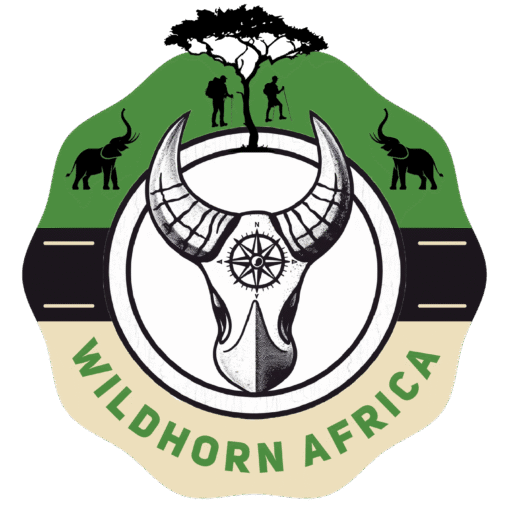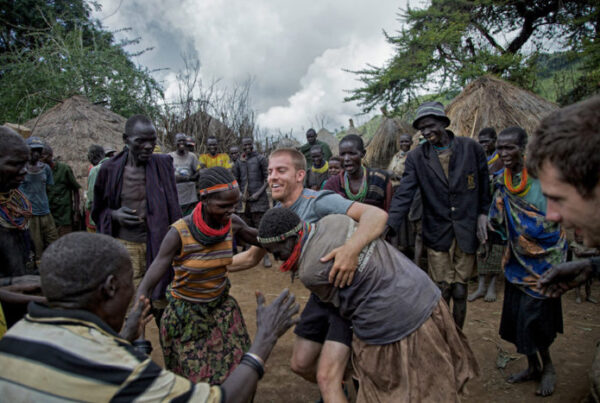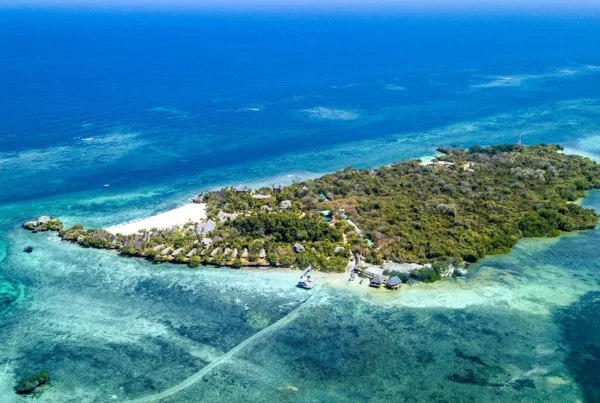Uganda Travel Budget Guide 2026 | How to Plan and Budget for Your Safari
What’s the Best Way to Budget for Uganda Travel?
Planning a journey to Uganda, the enchanting “Pearl of Africa,” is an exciting step toward a land where raw wilderness meets deep culture, where mountain gorillas dwell in mist-covered forests, and where the Nile flows with the same rhythm that has shaped civilizations for centuries. Yet for every traveler who dreams of this East African gem, one practical question always arises before the adventure begins: What’s the best way to budget for Uganda travel?
Budgeting for Uganda is not just about numbers; it is about crafting a balance between comfort, authenticity, and value. Uganda offers something for every traveler — from luxury safaris along the Kazinga Channel to budget-friendly adventures through the Rwenzori foothills. Understanding how to allocate your resources, anticipate costs, and make informed decisions ensures not only a stress-free journey but also a more meaningful one.
This comprehensive guide dives deeply into every aspect of travel budgeting for Uganda, providing expert insights into accommodation, transport, food, park fees, permits, and hidden expenses — all woven with an appreciation for the realities and rhythms of traveling in one of Africa’s most captivating destinations.
Understanding the Cost Structure of Uganda Travel
Before diving into figures and estimates, it is essential to understand how Uganda’s travel economy works. The country’s tourism sector is designed to support both high-end and budget travelers, offering a flexible range of experiences. However, unlike mass-market destinations, Uganda’s infrastructure focuses on sustainability and quality over quantity.
Costs in Uganda are influenced by park entry fees, road distances, conservation permits, and seasonal variations. Most safari activities are organized through registered operators who manage logistics, park permissions, and transportation — factors that can significantly affect pricing.
Uganda’s most famous experience, mountain gorilla trekking, is also one of the most regulated and conservation-driven activities in Africa, requiring an exclusive permit. This makes understanding the financial aspects of a Ugandan journey crucial for setting realistic expectations.
A good budget begins with awareness. The total cost of travel to Uganda depends on the type of safari chosen — budget, mid-range, or luxury — and how many parks and regions are visited. The longer and broader the itinerary, the more complex the budget becomes, but with careful planning, even a modest budget can unlock the magic of Uganda.
Flights and Arrival Costs: The First Step in Your Budget
The largest upfront cost for most international travelers is the flight to Uganda. The country’s primary entry point, Entebbe International Airport, lies just outside the capital city, Kampala, and serves as the gateway for both tourism and business travel.
Flight prices fluctuate depending on season, departure city, and airline. From Europe or the Middle East, roundtrip flights typically range between $700 and $1,200, while travelers from North America may pay between $1,200 and $1,800, depending on layovers and carriers.
Booking early, using flexible date searches, and monitoring regional airlines such as Ethiopian Airlines, Qatar Airways, Emirates, or KLM often yields the best fares. Another useful budgeting strategy involves combining Uganda travel with a neighboring destination — Rwanda, Kenya, or Tanzania — where regional flights can be relatively affordable, sometimes as low as $100 to $200 one-way.
Upon arrival, travelers must also budget for entry visas, which cost $50 for a single entry or $100 for the East African Tourist Visa, allowing access to Uganda, Kenya, and Rwanda under one permit.
Including these early costs in the total estimate gives a clearer financial picture before landing in Uganda.
Accommodation: From Safari Camps to Urban Comfort
Uganda’s accommodation options range widely, reflecting both the traveler’s preference and the destination’s remoteness. Understanding the tiers of accommodation helps balance comfort and cost while ensuring value.
In major towns like Kampala, Entebbe, and Jinja, travelers find a variety of hotels and guesthouses at competitive rates. Budget travelers can find clean, comfortable lodgings for $30–$60 per night, while mid-range hotels average $80–$150, offering amenities such as air conditioning, Wi-Fi, and on-site dining.
In safari destinations, the landscape changes. National parks like Murchison Falls, Queen Elizabeth, Kibale, and Bwindi offer everything from tented camps and eco-lodges to luxury lodges perched on crater rims or forest edges.
Budget lodges near parks charge around $50–$80 per night, often including breakfast. Mid-range lodges, favored by most travelers for their blend of comfort and immersion, cost between $150 and $300, while high-end properties, especially near gorilla trekking zones, can exceed $600 per night.
While it may be tempting to opt for lower prices, accommodation in Uganda directly impacts your experience. In remote areas, higher prices often reflect access, location, and sustainability measures — not extravagance. A well-chosen lodge provides more than a bed; it offers security, good meals, and a sense of serenity after a day in the wild.
Transportation Within Uganda: Roads, Flights, and Transfers
Uganda’s beauty unfolds across vast and varied landscapes. However, navigating between its national parks and towns requires thoughtful planning, as transportation is both a logistical and financial factor.
The most common safari routes are traveled by road, using 4×4 vehicles driven by professional guides. These vehicles are designed for rugged terrain and comfort over long drives. Safari vehicle hire, including fuel and driver, averages $150–$250 per day, depending on distance and itinerary complexity.
Some travelers opt for group safaris, which reduce costs by sharing vehicles and guides. Others choose private safaris, offering flexibility and exclusivity but requiring a higher budget.
For those wishing to minimize road time, Uganda also offers domestic flights operated by Aerolink and Bar Aviation. These flights connect Entebbe with destinations like Kihihi (for Bwindi), Kasese (for Queen Elizabeth), and Pakuba (for Murchison Falls). Prices vary from $200 to $350 one-way, significantly reducing travel time but increasing the overall budget.
Traveling within Uganda’s cities or towns is affordable. Short rides on boda-bodas (motorbike taxis) cost less than a dollar, while private car hires range between $30–$60 per day.
Factoring in both intercity and park-to-park transfers ensures your travel budget aligns with convenience and comfort.
Park Fees and Activity Permits: The Backbone of Safari Costs
Uganda’s national parks are jewels of conservation, and maintaining them comes at a cost shared between the government and visitors. These park entry fees and permits form the backbone of Uganda’s tourism budget.
Park entry fees generally range from $40 to $50 per person per day, depending on the park. However, the most significant expense — and the most rewarding — is the gorilla trekking permit, priced at $800 per person. This fee directly supports gorilla conservation, community development, and park management.
For chimpanzee tracking, permits in Kibale Forest National Park cost around $250, while experiences in Budongo Forest or Kalinzu cost less, usually between $100 and $150.
Additional activities, such as boat safaris, hot air balloon rides, night drives, and guided hikes, come at extra costs ranging from $30 to $100 each.
These figures may appear high, but they reflect Uganda’s commitment to sustainable tourism. Every dollar contributes to protecting ecosystems and ensuring communities benefit from wildlife conservation — a vital part of the country’s responsible travel ethos.
Meals and Dining: Tasting the Pearl of Africa
Ugandan cuisine is both hearty and affordable. Meals in local restaurants can cost as little as $5–$10, featuring staples like matoke (steamed plantains), beans, rice, and grilled meats. Mid-range restaurants and lodge dining options, catering to international tastes, average $15–$30 per meal, often including fresh fruits, vegetables, and locally sourced ingredients.
At luxury lodges, meals are typically included in the package, offering three-course dining experiences complemented by beautiful settings. Safari lodges frequently include full-board rates, covering breakfast, lunch, and dinner, simplifying budgeting and minimizing daily expenses.
While Uganda’s food scene is grounded in tradition, urban areas like Kampala and Jinja also host diverse international cuisines — Indian, Chinese, Italian, and Lebanese — reflecting the country’s cosmopolitan character.
Travelers should always budget a little extra for beverages, bottled water, or occasional indulgences like a Nile Special beer or a Ugandan coffee at a scenic café.
Seasonal Differences: When to Go and What It Means for Costs
The timing of your visit plays a crucial role in how you budget for Uganda. The country’s tourism calendar revolves around two main dry seasons — December to February and June to September — when wildlife viewing and trekking conditions are ideal.
These months are considered high season, meaning that accommodation, permits, and flight prices are at their peak. Gorilla permits, in particular, sell out months in advance, and lodges near key parks operate at full capacity.
The low season (March to May and October to November) brings rain, but it also brings lower prices. Many lodges offer discounts of up to 20–30%, and some tour operators reduce package rates. The landscapes are greener, photography is stunning, and crowds are fewer.
For budget-conscious travelers, this can be the most rewarding time to visit. However, roads may be muddier, and some remote lodges can be harder to access. Balancing cost savings with weather considerations helps refine a budget that matches expectations and comfort.
Hidden and Often Overlooked Costs
Even the most detailed travel budgets can overlook small yet impactful expenses. Uganda’s tipping culture, while not mandatory, is a way of expressing appreciation. Guides, porters, and lodge staff typically receive $5–$15 per day, depending on service.
Travel insurance is essential and should never be omitted. Comprehensive coverage that includes medical emergencies, trip cancellations, and adventure activities typically costs around 5–7% of your total trip cost.
Currency exchange fees, credit card surcharges, and ATM withdrawals can also affect your spending. Uganda’s official currency, the Ugandan Shilling (UGX), is used for most local transactions, while US dollars are preferred for larger payments like permits and accommodations. Carrying crisp, recent US bills (issued after 2009) avoids rejection.
Souvenirs, such as handmade crafts, woven baskets, or Ugandan coffee, add another personal touch to your journey — and should be included in discretionary spending.
Accounting for these “soft” expenses prevents unexpected surprises and ensures a smoother experience from start to finish.
Crafting a Realistic Uganda Travel Budget
While every traveler’s preferences differ, certain budget ranges can serve as reliable guides.
A budget safari in Uganda typically starts at around $250–$300 per person per day, covering accommodation, transport, and activities. A mid-range safari averages $400–$600 per day, striking a balance between comfort and experience. Luxury safaris, offering exclusive lodges, private flights, and personalized service, can cost $800–$1,200 per day or more.
These estimates include meals, transportation, and park fees, ensuring transparency in what travelers can expect. The key to satisfaction lies in matching expectations with the right tier of travel — not overspending for amenities you will not use, nor underspending at the cost of safety and comfort.
Working with experienced operators ensures that your budget aligns with your goals — whether your focus is photography, family travel, adventure, or relaxation.
Maximizing Value: How to Stretch Your Travel Dollar
Budgeting wisely in Uganda is not about cutting corners but about maximizing value. Travelers can optimize costs by choosing overland safaris instead of flights, booking directly with reputable local operators, and traveling during shoulder seasons for better rates.
Combining parks geographically also minimizes transport expenses. For example, visiting Kibale, Queen Elizabeth, and Bwindi in sequence allows for a continuous loop, saving fuel and time.
Many lodges offer discounted packages for longer stays or for combining sister properties. This not only reduces per-night costs but also enhances relaxation by reducing constant transfers.
Lastly, investing in quality — especially in guides and vehicles — pays off in experience. A skilled guide transforms sightings into stories, and a reliable vehicle ensures that your safari remains about adventure, not inconvenience.
The Role of Local Expertise and Professional Operators
Planning and budgeting for a Ugandan journey can seem complex, but with expert guidance, it becomes seamless. Tour specialists such as WildHorn Africa simplify this process by curating itineraries that balance cost, comfort, and experience.
Their intimate knowledge of Uganda’s landscapes, lodges, and logistics allows them to craft packages that deliver exceptional value — ensuring that travelers see the best of the country without financial surprises. Whether organizing gorilla permits, selecting lodges within your price range, or managing transfers, a trusted operator’s support is invaluable in staying within budget while enhancing enjoyment.
WildHorn Africa’s expertise goes beyond numbers; it turns budgets into experiences, ensuring every dollar spent contributes to the quality, safety, and authenticity of your journey.
Conclusion: Budgeting as the Gateway to Freedom
Budgeting for Uganda travel is not a restriction — it is liberation. It transforms dreams into achievable plans, allowing travelers to experience the full grandeur of the Pearl of Africa with clarity and confidence.
A well-planned budget ensures that each day is lived fully, without financial anxiety. It allows for spontaneous detours, extra experiences, and meaningful interactions with people and nature. Uganda rewards those who plan wisely — those who understand that value lies not in how much is spent, but in how deeply each experience is felt.
For travelers ready to turn their plans into reality, it is best to book their Africa tours and safaris with WildHorn Africa, whose deep understanding of Uganda’s landscapes, pricing, and rhythm ensures journeys that are both cost-effective and unforgettable.
Because in the end, the best budget for Uganda is not just measured in money — it is measured in moments.





 WildHorn Africa – Authentic and unforgettable tours across Africa, guided by local experts who know the land, wildlife, and culture best.
WildHorn Africa – Authentic and unforgettable tours across Africa, guided by local experts who know the land, wildlife, and culture best.


